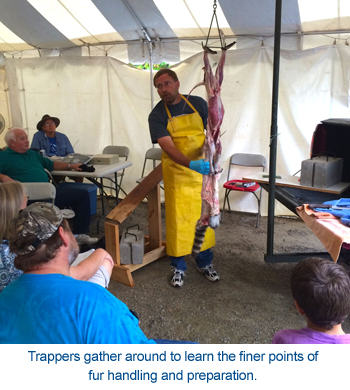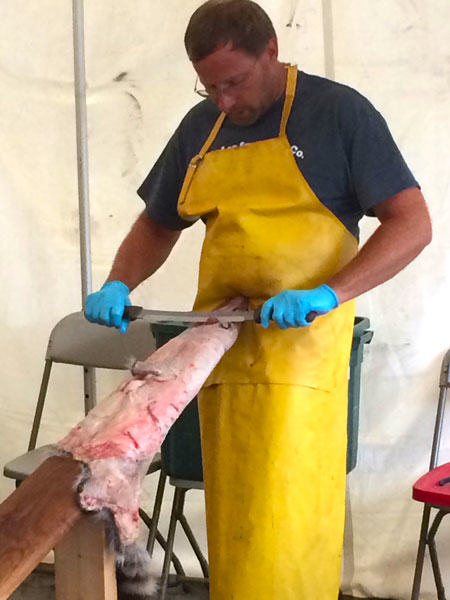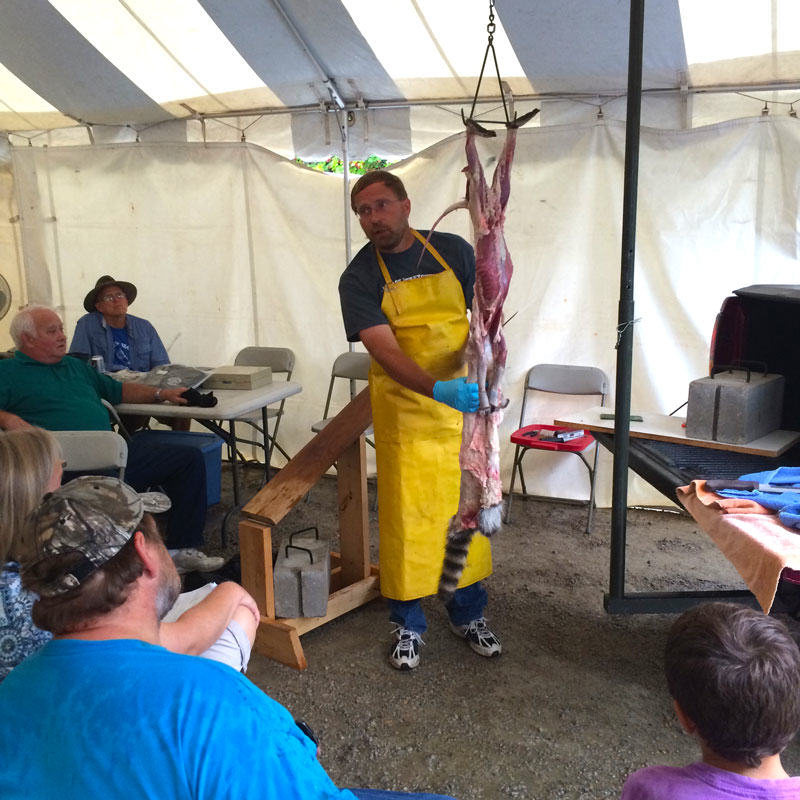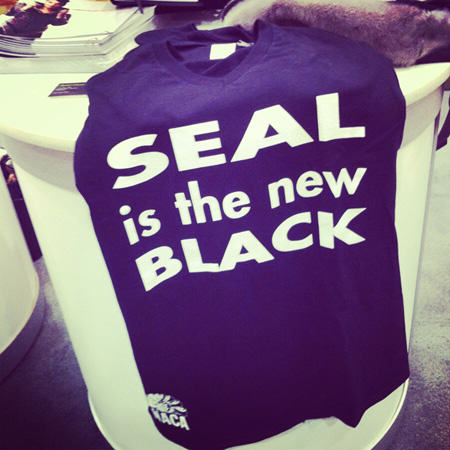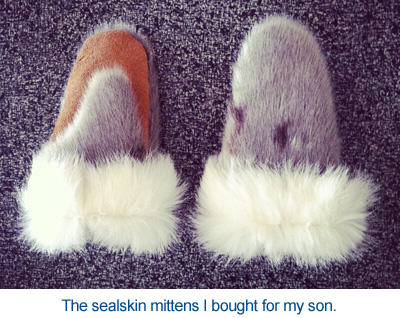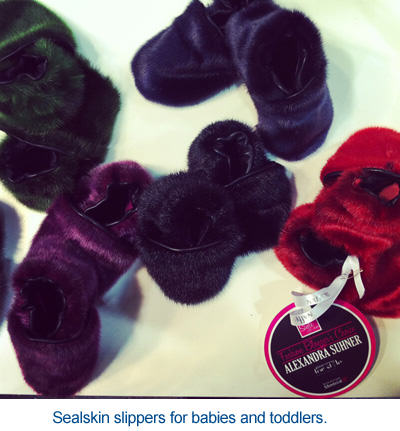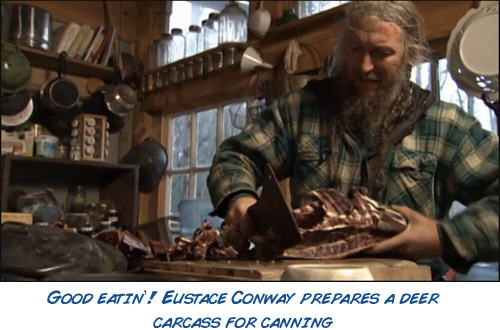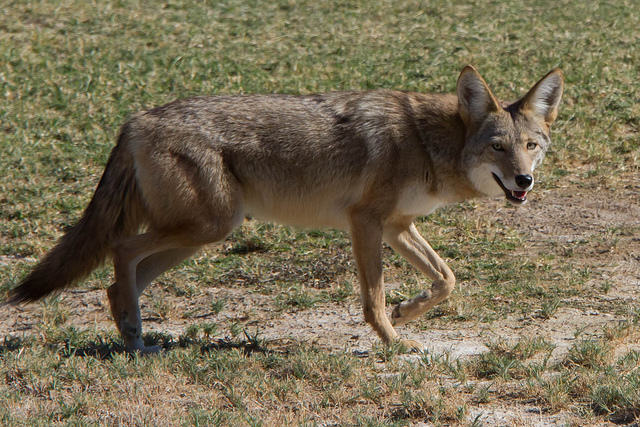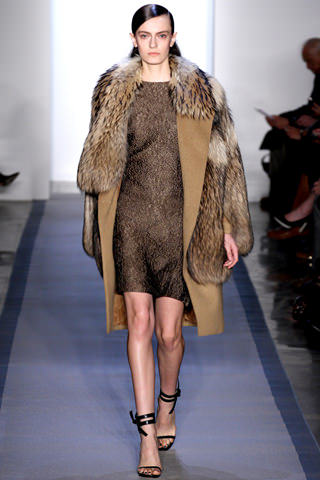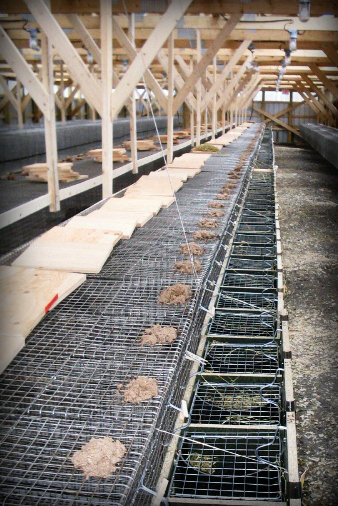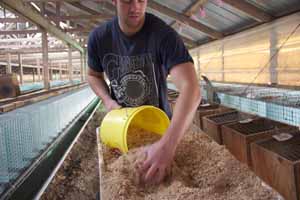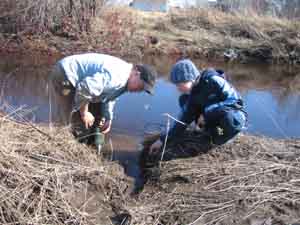On a recent Saturday I attended a small trapper gathering and I must say I always walk away from these…
Read More

Environment & Conservation
Fight Climate Change with Style: Wear Real Fur Not Fake
by Alan Herscovici, Senior Researcher, Truth About FurA million people took to the streets around the world, last week, calling on their governments to take action on…
Read More

A million people took to the streets around the world, last week, calling on their governments to take action on climate change.
Individuals are expected to do their bit too, which usually means giving something up: our gas-guzzling cars, meat (for those who see cows as methane-emitting monsters), and the list keeps growing …
What we don’t often hear is that you can keep warm and look great while fighting climate change ... by wearing fur!
Unlike most synthetics, real fur is not made from petroleum. For lots more reasons why fur is a great choice for those who care about nature, check out www.furisgreen.com. Also: Plastic Bags on Our Backs.
And for the truly dedicated eco-warrior, keep your furs on indoors and turn down the thermostat!
Heck, maybe you can even try going naked in fur! That should keep everyone happy!
5 Reasons Why I Support the Canadian Seal Hunt
by Alexandra Suhner Isenberg, former Online Communications Director, Truth About FurTwo years ago I went to NAFFEM, a large fur trade show in Montreal. I was invited as a blogger, to…
Read More
Two years ago I went to NAFFEM, a large fur trade show in Montreal. I was invited as a blogger, to check out the beautiful pieces and choose some of my favourite items for sale at the show. I am a huge supporter of the Canadian fur industry (read about my reasons here) but I’ve been less vocal about the seal hunt, primarily because I didn’t have enough information to make an informed opinion about it. Well, now I do, and I would like to share it with you because I think it is important.
1. Seals are a sustainable resource and are in abundance. We live in a world where resources have become an issue, and many of us are choosing to consume products that come from renewable resources. Seal is a great example of this – there are tons of them in Canada and they are not at all at threat of becoming endangered.
Speaking of sustainability, seals are part of the reason why fish stocks are very low (although overfishing is also a big issue) and the seal hunt not only provides jobs and resources for the hunters, but also allows the fish populations to regenerate (a bit.) All major conservation groups will agree that a responsible use of resources (like hunting seals for food and clothing) is a good thing, and is often the central principle of modern conservation.
2. Seals are local. The green topic is a big one right now, and part of the green movement focuses on buying local.
Canada has a lot of great resources, but when it comes to fashion, few are 100% Canadian. Nearly all of our fashion products are in some way sourced from overseas (whether it be raw materials or construction) but seal skin and wild fur are 100% free range, local products.
3. The seal hunt supports Canadian communities. There are two major seal hunts in Canada, one in the Arctic sea (seals hunted by Inuit people) and one on the East Coast (a commercial seal hunt.) Both provide jobs and resources for those people. The meat is eaten, the fat is used for a variety of products, and the skin is sold so that these people can support themselves.
Food, as you may know, is extremely expensive in the Arctic, and there are limited jobs in that area, or in the Maritimes. The seal hunt is a very important Canadian industry for the people who depend on it.
4. The seal hunt is not inhumane. The animal rights activists will have you believe that the seal hunt is inhumane, but this is not the case.
First of all, most seals are killed with rifles (not clubbed to death.)
Secondly, there have been numerous studies done on the seal hunt, and biologists and veterinarians have all agreed that the seal hunt is no less humane than any other hunt.
SEE ALSO: EU SEALING POLICY IS HYPOCRITICAL, UNDEMOCRATIC
5. The media paints an unfair picture. My question, after having learnt all the above, was why does the seal hunt have such a bad reputation? There are two answers to this.
First of all, seals are cute, and people are more likely to be protective of cute animals. If we were all truly concerned about cruelty and sustainability, why aren’t we doing more to save fish? Many species of fish are far more at risk than seals, yet their not-so-cute appearance doesn’t exactly inspire people to campaign for them. (Notice how we care more that our tuna is “dolphin safe” but not so much if that particular tuna is endangered.)
Secondly, the seal hunt is much more visible than other hunts, and the access to it allows for more imagery. The seal hunt happens in certain places at very specific times, and so it is very easy for activists to turn up and take photos of blood on the ice. Those same activists aren’t invited into abattoirs, and therefore we don’t have the same images in our head of cows or sheep. The fact that seals are cute, and that we have access to photos of them being killed, means the seal hunt has been very unfairly portrayed by the media and activist groups.
Many of us are so far removed from nature, farming, and hunting, and it is so easy to forget that our food comes from the land. While I will admit I don’t like seeing photos of any dead animals, I do appreciate the process and am under no illusions about the realities of eating meat and wearing animal products.
For those of us who do choose to consume animals, the best we can do is consume sustainable resources that are treated humanely – and the seal hunt is just that.
The animal rights movement claims to be motivated above all by the desire to save animals – each and every one of…
Read More
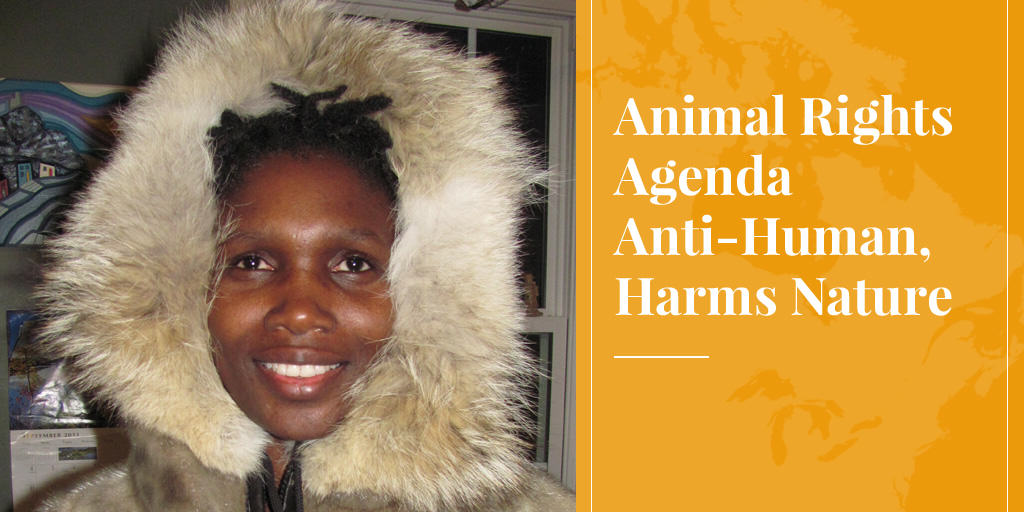
The animal rights movement claims to be motivated above all by the desire to save animals – each and every one of them – from harm at the hands of humans. It also claims to support conservation efforts since it is in the wild that all animals should be living out their long and happy lives. In reality, its agenda is more anti-human than pro-animal, and its impact on true conservation efforts has been nothing but negative.
I grew up in northern Ontario with lots of fishing and hunting and some trapping in my extracurricular activities. Later I went to work in the Northwest Territories and Nunavut, first with the Hudson’s Bay Company, then with Inuit cooperatives, and finally with the Department of Environment of the Government of Nunavut.
My day-to-day contact with Inuit educated me about respectful and sustainable use of wildlife resources. I saw over three decades in the far north (I am now retired) how the animal rights agenda harmed the Inuit, driving them into industrial and less-sustainable alternatives and self-esteem-crippling welfare. It became clear to me that the animal right activists, those that play a leadership/ideological role, do not care about people.
And when you consider how their activities ultimately remove responsible users/stewards from the environment, it is evident that they do not care that much about species wellbeing or ecosystem preservation. Their focus is on the individual life, and the life of a rat or a rabbit is equal to that of a person – actually more than equal, as humans are considered to be tainted and therefore not welcome to participate in this conversation.
Animal rights activists, as opposed to real environmentalists, hate when you point out that their campaigns are anti-human rather than pro-animal.
When I first left the north to complete my masters degree, I picked up pretty quick on what has been happening on our university campuses. I learned that capitalism and profit were dirty words. Even if Russia was falling from grace by that time, there was still faith that China and Cuba would reveal socialism as the true salvation.
Then, when I returned much later to begin a doctorate, I learned that it was now cool to be anti-globalist – and that term seemed to include anything touching on business that could lead to a profit or at least a surplus. There was little interest in discussing what kinds of enterprise might be acceptable, even Inuit Cooperatives or Hunters and Trappers Associations which help people to sustain their traditions and mixed economies at the community level in remote areas. The rigidity of thought was frightening.
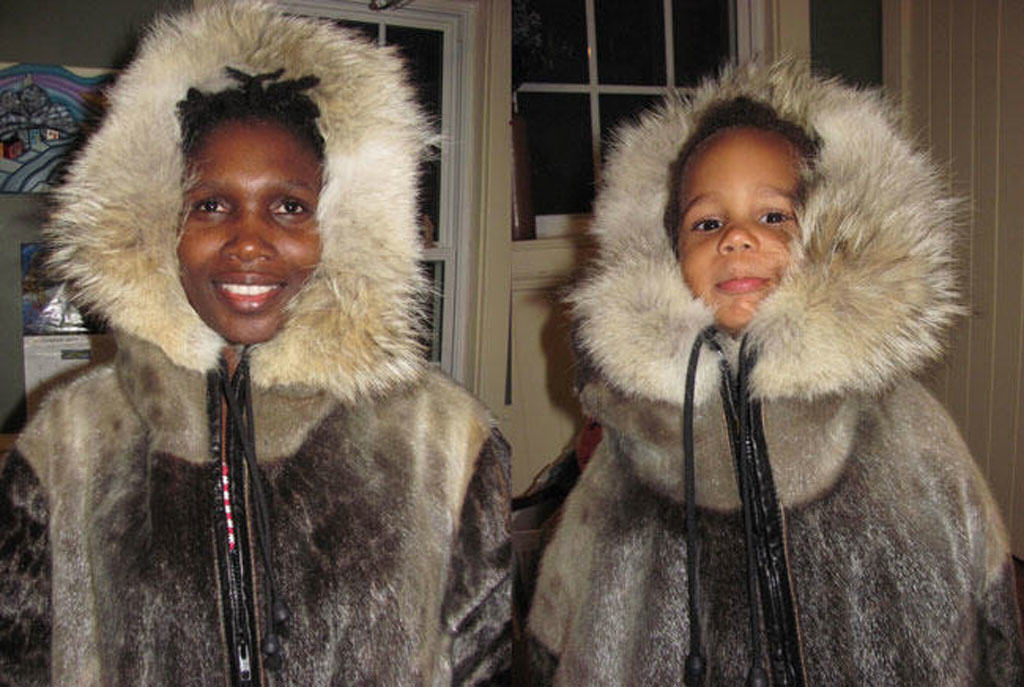
Stifling Intellectual Atmosphere
The intelligentsia found in the social sciences departments of universities were a major part of the problem; they were rarely interested in stimulating real dialogue about the complex subject of human use of wildlife resources. The articles selected for student reading, the research topics accepted by graduate committees, the entrenched simplification of bad capitalist/Western society/man as wildlife user made intellectual conversations in the university community quite predictable, in an extremely stifling atmosphere.
I came to see a disturbing affinity between the animal rights movement and the anti-capitalist cum anti-globalist mindset so prevalent on campus. Both pushed an agenda no less extreme and unreasoning than those who endorse a kill-anything-that-moves or pure capitalist ideology – except that the latter gave way to more adaptable and sustainable forms long ago.
Interesting how both "anti" camps (anti-harvest and anti-capitalist) need to demonize their opponents. I guess the complexities of real life make it more difficult to mount fund-raising or political campaigns?
SEE ALSO: WHY IS FUR SO CONTROVERSIAL AND WHY SHOULD IT MATTER?
Real World Is Not Disney
Yesterday the title of a storybook caught my eye. It was The Childhood of Young Animals which looked at the early stages of animals of different species. The animal rights folks must be smiling to see young animals called "children". Luckily, my 5-year-old son seems to have an admirable ability to distinguish between the fantasy content of storybooks and Disney movies and the real lessons of the world.
Too bad the animal-rights proponents cannot do the same. If they could, they would have more respect for aboriginal and rural peoples who live outside the highly industrial and urbanized mainstream. And they might save true environmentalism from being discredited by their own sensationalistic and misleading rhetoric.
Except to a very few people, a rabbit or a rat are not equal to a human being, because the rabbit and the rat will never see the big picture, and will never feel any responsibility for other animals except their own litters. True, most human beings will never sacrifice their child's life for an animal of another species. But they will educate their young to protect the continuation of wildlife and nature in general – because our own future survival depends upon it.
Adapting to the realities of life on this planet requires careful thought and reasoning, feedback and new insights, compromise and adjustments to thought and practice. These, unfortunately, are not qualities that animal rights activists have shown much interest in developing.
What is the appeal of the reality TV show Mountain Men, and others in the same genre? If harvesters of…
Read More
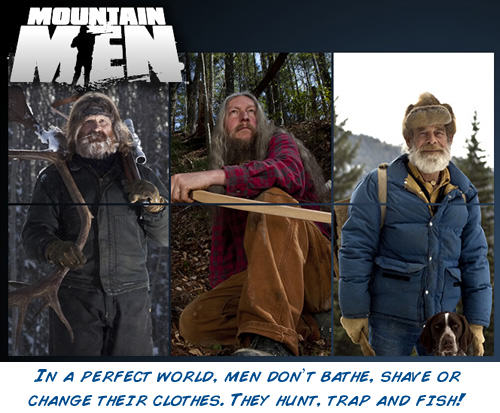
What is the appeal of the reality TV show Mountain Men, and others in the same genre? If harvesters of nature’s resources, and not least the fur trade, can answer this question, they can apply the lesson learned to their own public relations, and in so doing win over millions of new supporters.
First, some clarification. Yes, Mountain Men is reality TV, but not of the kind that imprisons a bunch of misfits on an island to tear one another’s throats out, with instant celebrity status for the winner. Mountain Men is the other kind.
Mountain Men is about the daily lives of men who have opted to live cheek to jowl with nature, no matter what she may throw at them.
Or in the words of the History Channel, which airs the show: “Using ancient skills and innate ingenuity, these men fend off nature’s ceaseless onslaught, carving out the lives they’ve chosen from a harsh and unforgiving landscape.”
The audience relates at a visceral level to the painful, joyous or scary experiences of these shaggy-bearded, unkempt men with questionable hygiene and (apparently) masochistic tendencies.
Paradoxically though, many in the audience, like me, are city dwellers whose lifestyle is the antithesis of a mountain man’s. Why are we drawn by a lifestyle we go to such pains to avoid?
We have “guys” to change our oil, do our dry cleaning, mow our lawns and deliver our pizzas. We even boast about them as if somehow we deserve credit for their performance. “My mechanic is the best!”
And for sure, not one of us has ever made our own bullets, then shot a squirrel with a firearm that belongs in a museum, then cooked it and chewed on a piece of meat the size of a pinky and declared it good eatin’.
The fact is, though, that millions of us fantasize about doing just that!
Two Poles and a Jar of Worms
If you don’t know where I’m coming from, consider the ubiquitous angler. If you’re not an angler yourself, it’s almost certain your neighbor is.
Angling is one of the most popular pastimes for men (yes, it’s a manly thing) whose working lives are spent pushing papers around a desk, and there’s a good reason why.
It’s a call of nature we cannot resist, an instinctive drive to provide for our families by using our wits. A trip to the supermarket just doesn’t cut it.
And that is why, week in, week out, rain or shine, we populate river banks, catching little or nothing, staring at the water and dreaming. Dreaming how grand life would be if someone would actually pay us to do this.
And when our sons are old enough, they join us willingly (or so we like to believe) to bond over two poles and a jar of worms. If the fates are kind and we bag a couple of minnows, we char them black over a fire and lie to each other about how they taste better than anything Mum prepares with all her fancy recipes. Good times!
For other men, nature’s call is to hunt or trap.
Not Just Mountain Men
So how can the fur trade learn from shows like Mountain Men, and apply what it learns in its public relations?
We start by recognizing how popular this genre is, of folk living from nature, by their wits.
To name just a few shows with much the same formula as Mountain Men, we have: Swamp People (same hairy humans as Mountain Men, but hunting alligators); Outback Hunters (much like Swamp People but with Aussies hunting crocs); Lobster Wars; Lobstermen: Jeopardy at Sea; Wicked Tuna; Swords: Life on the Line, and so on.
Then there’s the granddaddy of them all, Deadliest Catch, the award-winning saga of crab fishermen trying hard not to drown or get minced in machinery. Now in its 10th season, Deadliest Catch has set record ratings in its class across both males and females, in all age brackets.
And we haven’t even touched on the survivalist genre featuring Bear Grylls (Man vs. Wild) et al. eating anything which once had, and sometimes still has, a pulse.
Don’t worry about the ratings. The mere fact that the cable TV powerhouses of History, Discovery and Nat Geo keep churning these shows out is proof enough of their appeal. Just this June, Animal Planet got in on the act with Beaver Brothers.
So Who Are They?
Next we try to identify who the audience are by understanding who they are not.
They are not drawn to shows like Mountain Men in the same way audiences are drawn to, for example, American Chopper or Counting Cars. The latter are unabashedly aimed at the millions of bikers and gearheads out there who lap them up because, well, they’re about them!
No, Mountain Men does not survive on an audience of mountain men, any more than Swamp People relies on swamp people. Even if all the mountain men, swamp people, crab fishermen, lobstermen and croc hunters in the world tuned in to an episode of Deadliest Catch, they’d hardly make a blip in the ratings.
So let’s say the bulk of the audience for this genre represents a cross-section of society, from diverse backgrounds, but with a few things in common that do not include risking their lives on a daily basis to catch dinner. And one of those things is that they support the harvesting of animals for human benefit.
Like most people, they’re probably not vocal in their support of this, and if asked what they think of animal rights activists, will probably reply, “a bunch of wackos”.
But they are nonetheless important allies. They are the people who, when push comes to shove, ensure that the animal rights movement does not have its way at every turn. They vote, they sign ballots, they pay membership dues to hunting and fishing associations that represent their interests, and they pay license fees that fund wildlife management and conservation efforts.
So are we catering to them, nurturing them to become vocal advocates not just of a lifestyle, but more importantly of the larger picture of man’s place in nature? Not much. Are they equipped with the knowledge to become such advocates? Definitely.
How Things Work
To cater to an audience, you have to know what interests it and what puts it to sleep, and most fur trade PR is not going to keep a mountain man wannabe on the edge of his seat.
The fur trade aims its PR primarily at two audiences: fashionistas, and people who are still undecided on whether they favor using animals for human benefit. This second audience, of course, includes a never-ending supply of youngsters who’ve never heard the arguments before.
High fashion is the biggest life force driving the fur trade, with trickle-down effects on everything from high street retail to the prices producers get for their pelts. However, for most people, and certainly our mountain man wannabe, the latest offerings on the catwalks of Paris and Milan are weird and irrelevant.
The fur trade’s other obsession for the last 45 years has been debating animal welfare vs. rights, and the role of sustainable use as a conservation tool. (That’s how long it’s been since the International Fund for Animal Welfare began campaigning to end the Canadian seal hunt.) Everything worth saying has probably already been said, but the messages need to be reinforced again and again because we are trying to influence people’s fundamental views about man’s place in nature.
However, our mountain man wannabe is decidedly not our target audience. He is no more interested in debating the rights of squirrels than he is in how they look, sheared and dyed pink, around the neck of a supermodel.
What he does want is information that’s educational, useful, and makes him go, “Wow! I never knew that!” He may or may not have a hankering to eat squirrel stew, but he is interested in the process, in how to get the squirrel in the pot in the first place. Which means he might also be interested in knowing:
• Why grey wolf and wolverine fur make the best hood ruffs and jacket linings in the Arctic;
• That a deer, raccoon or beaver conveniently has just enough of the oil called lecithin in its brain to tan its own hide; and
• That mink carcasses make great crab bait, and it’s not because crabs love them so. (Squid are better.) It’s because seals and sea lions can’t stand the smell!
All these and more interesting questions are now addressed in great detail on the web by hunters, trappers, tanners and crab fishermen, and reality TV is cashing in on this treasure trove of amazing information. How about we do the same?
How about we complement our efforts targeting traditional audiences, and spend a little more time talking to people who could be powerful allies if only we started speaking their language?
Let’s connect with all the mountain men out there, not just the ones walking the walk, but also the millions of people tuned in to cable TV, dreaming of making their own squirrel stew some day.
I’ll start the ball rolling. In my next post, learn why one of the most desired and expensive of North American furs in the mid-20th century is now just roadkill.
It’s no secret that fur was one of the hottest trends of the season with a presence in most major…
Read More
It's no secret that fur was one of the hottest trends of the season with a presence in most major runway shows. But fur is more than just fashionable, it is also one of the most sustainably-produced natural resources on the planet. Furs such as coyote, fox, beaver and muskrat have been used for centuries to provide warmth and incredible versatility. And when these furs are used responsibly, it's not just the fashion industry that thrives, our natural environment benefits too!
Why trapping?
Nature, like most things, requires balance. This balance today includes the coexistence of humans and animals, and the modern fur trade plays a role in helping to maintain this relationship. Without regulated trapping and hunting to manage the size of wildlife populations, many ecosystems would be drastically affected. Regulated trapping is also often necessary to protect property and natural habitat, and to protect both humans and wildlife from disease. Let’s look at a couple of examples.
Leave it to Beaver!
The historical fur trade that led to the foundation of many of our towns and cities was fueled, above all, by the beaver. After more than 400 years of commercial fur trading in North America, biologists tell us that beavers are as abundant as they were when Europeans first arrived here – thanks to modern trapping regulations. However, too many beaver can be as much a problem as too few beavers. Left unmanaged, beaver populations will keep increasing until they eat themselves out of house and home.
Once vegetation is destroyed, it will take many years before beavers can return to the region. With regulated trapping, beaver populations are maintained in balance with available habitat – they are more stable and healthier. Furthermore, overabundant beavers can flood homes, roads, fields and forest habitat. Much better that we use some of what nature provides!
One of the first furs to be used for clothing by First Nations people, beaver is still widely used today by some of the top designers. Specifically, on the runway this year, Givenchy has used beaver to create a sleek bomber jacket, Haider Ackermann showed a monochrome coat while Chloé featured a spectacular beaver vest.
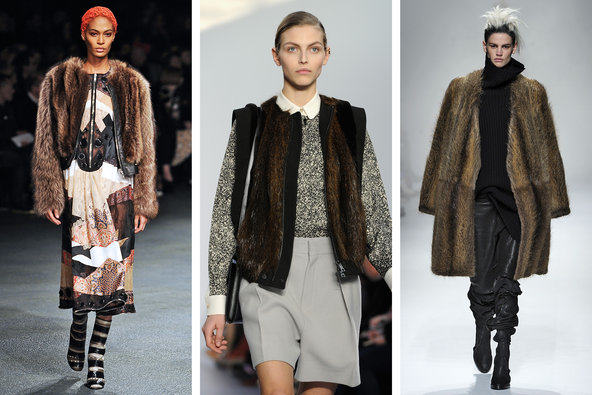
Coyotes get wild!
Coyotes are highly abundant across North America. They adapt well to human proximity and have profited from wolves being pushed out of much of their traditional range. Coyotes, however, can become dangerous when they are overpopulated and lose their fear of humans. In California, where I live, coyotes have been taking pet dogs and cats from backyards! They can also cause serious problems for cattle ranchers and sheep farmers when they prey on young calves and lambs. And overpopulated coyotes are more likely to spread diseases including rabies, tularemia, and hepatitis which can be transmitted to both animals and humans. Regulated trapping seasons help decrease the negative interactions between humans and wildlife – so why not make use of this remarkable natural resource?
Coyote fur, warm and dense, is great for making rugged men's jackets. It's beautiful, natural hue has also been popping up in women's accessories and shoes. And, of course, it is the favorite choice for trimming the hoods of down-filled parkas. (Fur trim on your parka hood protects your face from the cold winds of winter like nothing else!)
Think about it!
So here’s the real question: since wild furbearer populations are abundant and, in many cases, must be managed to maintain a balance with available habitat, should we kill these animals and throw them away? Or is it more respectful to use this beautiful natural material?
What do you think?
“…Father believed that there was an animal even more dangerous than [humans], and one that was extremely common too: the…
Read More
“…Father believed that there was an animal even more dangerous than [humans], and one that was extremely common too: the redoubtable species Animalus anthropomorphicus, the animal as seen through human eyes. We’ve all met one, perhaps even owned one. It is an animal that is ‘cute’, ‘friendly’, ‘loving’, devoted’, ‘merry’, ‘understanding’….In [all these] cases, we look at an animal and see a mirror.” Life of Pi, Yann Martel.
Two recent news stories cast a revealing spotlight on our muddled thinking about animals.
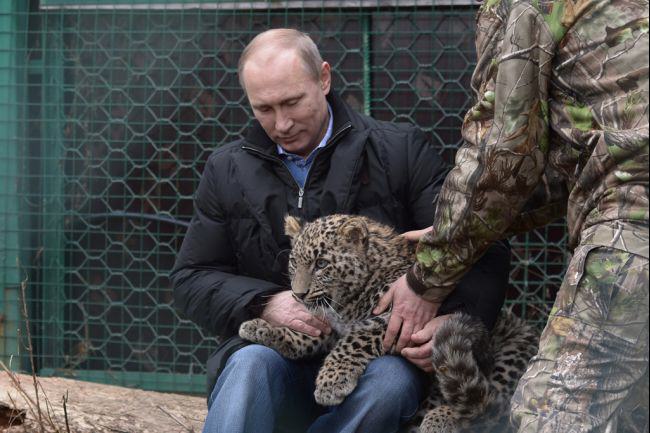
First, in Sochi, president Vladimir Putin was photographed caressing a young Persian leopard cub at a newly-constructed breeding and rehabilitation center.
“The restoration of this endangered species will be part of the heritage of these games; the natural environment is much improved thanks to the Olympics,” said Mr. Putin.
Take that, environmental activists with all your whining about the construction of Olympic installations in a pristine wilderness!
One local activist was just sent to prison for three years for painting protest graffiti on the wall of a construction site. But there’s nothing to soften a tough politician’s image like cuddling a baby animal…especially a “charismatic” leopard or other big cat.
Next stop, Denmark, where the Copenhagen Zoo sparked animal activist ire – and an international media feeding frenzy – for euthanizing an 18-month-old giraffe named Marius.
As part of the European breeding program, the zoo must maintain genetic diversity in its limited space, so Marius was redundant.
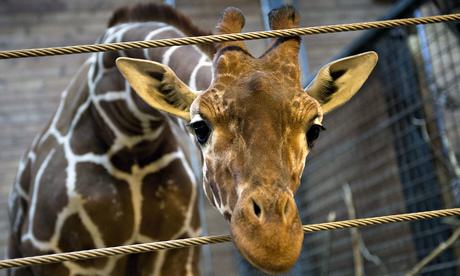
The European Association of Zoos and Aquaria (EAZA) fully supported the Copenhagen Zoo’s decision. But many were horrified when Marius was lured to lower his graceful 2-meter-long neck with a piece of rye bread – his favorite snack – and then shot through the brain with a captive-bolt pistol.
Even more shocking to many was the zoo’s decision to chop dead Marius into large pieces in front of visiting children and their parents, before feeding him to the lions.
Bengt Holst, scientific director of the Copenhagen Zoo was admirably calm and intelligent as he cut through the media sensationalism with plain talk.
“I know the giraffe is a nice-looking animal, but I don’t think there would be such outrage if it had been an antelope, and I don’t think anyone would have lifted an eyebrow if it was a pig,” said Holst.
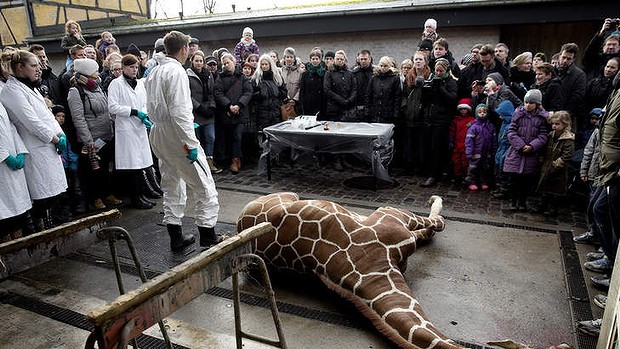
“There are 600 deer culled every year in a nature park north of Copenhagen, and no one gets upset. Humans have changed nature and we have a responsibility to maintain a balance.
“Humans kill and eat more than 50 billion animals a year. We have killed 5 giraffes since EAZA’s record-keeping began in 1828. Inbreeding can increase a population’s susceptibility to disease and other chronic conditions that can threaten the future survival of species under our care,” he explained patiently.
Nor did the zoo make any apologies for cutting Marius apart in front of children.
“It is not cruel, it is natural. Carnivores eat meat. If it was not the giraffe, it would have been a cow – what is the difference?
“Nature is not Disneyland where animals are only born but never die. In nature, animals must also die. Lions eat giraffes in nature. Why ‘protect’ children from reality?
“These children had the opportunity to see the wonder of the giraffe: for example, the huge heart that is needed to pump blood two metres up to their brain. They learned something in a way they would never learn from a book,” said Holst.
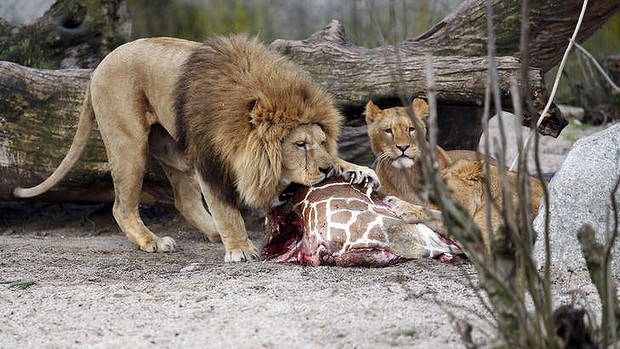
All very logical and scientific. But did he really like these animals, asked a journalist? “Of course I like these animals, that is why we are working so hard to protect their future. Sometimes you have to do things that are not so pleasant, but it is important to be intelligent about such things,” said Holst.
Not least interesting in this story, of course, is our own conflicting feelings about “charismatic animals”. Like it or not, Putin’s leopards (or, in this case, Danish lions) eat giraffes like Marius.
This reminds me of one of the most impressive scenes in the 2005 film The March of the Penguins when, after enduring incredible hardships, our heroes finally make it to the sea, only to be torn to bits by leopard seals.
For some reason, anti-seal-hunt activists never feature this footage on their protest websites?!
But let’s be honest: none of us are totally free of anthropomorphism. It takes a pretty cold-hearted person not to feel some sympathy for long-lashed, dewy-eyed Marius. Or for fluffy “baby” seals. Or for almost any animal staring wistfully into a camera lens. Especially when most of us now live in cities and rarely see a wild animal.
When overpopulated beavers flood our roads or raccoons move into our attics, however, it is remarkable how fast perceptions can change!
Lies Activists Tell (#3): The CE Delft Report
by Alan Herscovici, Senior Researcher, Truth About FurIn their attempt to discredit the environmental credentials of the fur trade, activists often cite a “life cycle assessment” (LCA)…
Read More
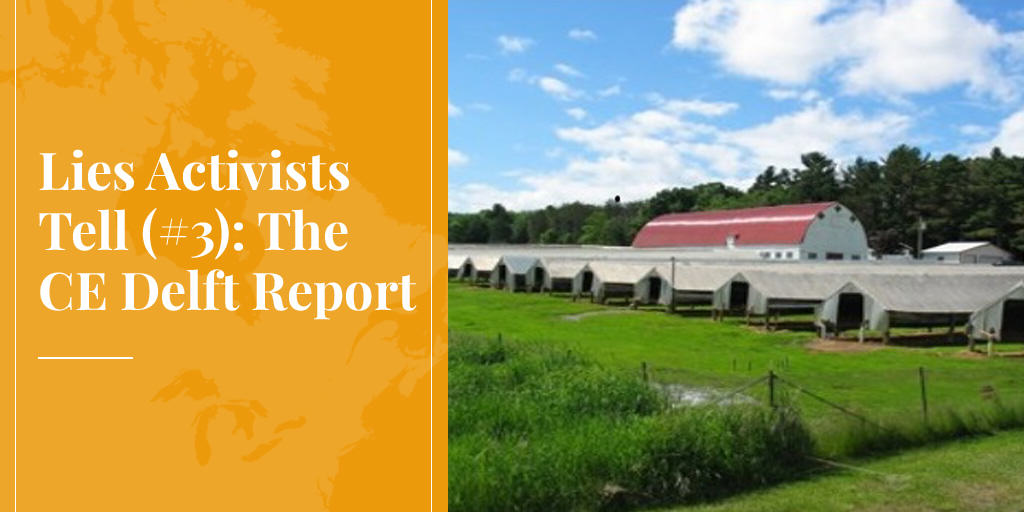
In their attempt to discredit the environmental credentials of the fur trade, activists often cite a “life cycle assessment" (LCA) produced by CE Delft, a Dutch research consultancy (see: NOTES, below). This study (The environmental impact of mink fur production, Delft, January 2011) found that: “Compared with textiles (including polyester, cotton, wool, and polyacrylic ‘fake furs’), fur has a higher impact on 17 of the 18 environmental themes, including climate change, eutrophication and toxic emissions.”
Because these claims, if true, would contradict our belief that fur is an environmentally responsible choice, we decided to take a closer look. It is lucky that we did!
Stated simply, we found that CE Delft’s negative assessment of fur results from several methodological assumptions or questionable statistics.
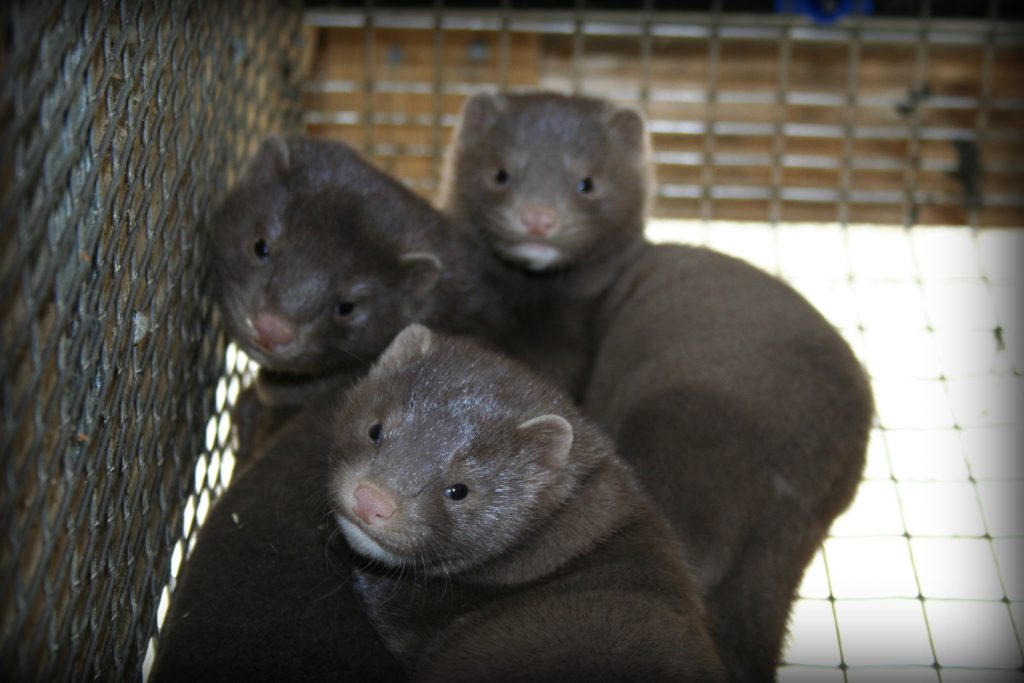
Among the most important concerns:
CE Delft used a significantly inflated figure (almost double our findings!) for the amount of feed required to produce farmed fur.
- They ignored the fact that, because this feed is composed mostly of wastes from our food-production system, it could be considered an environmental benefit rather than a cost.
- Mink manure made from soiled straw bedding and carcasses could also be assigned environmental credits rather than costs – for replacing synthetic fertilizers and fossil fuels.
- Not least important, CE Delft discounts the environmental benefits of real fur apparel lasting much longer than fake furs or other textiles, i.e., if a real mink last five time longer than a fake fur coat, its environmental impact should be compared with that of five fakes, not one!
Let’s look at this CE Delft report in more detail ...
- CE Delft (“Committed to the Environment”) describes itself as an "independent research and consultancy organization specialized in developing structural and innovative solutions to environmental problems. CE Delft’s solutions are characterized in being politically feasible, technologically sound, economically prudent and socially equitable.” [Socially equitable? Except for mink farmers, it would seem!]
- This study, was commissioned by three European “animal-rights” groups that strongly oppose the use of fur: the Dutch Bont voor Dieren, the Belgian GAIA (Global Action in the Interest of Animals) and the Italian Lega Antivivisezione LAV). (No comment!)
- Turning to the substance of this study: the feed used to produce mink is identified as one of two elements that account for most of the environmental costs of fur. This claim, however, is based on several assumptions:
- CE Delft sets out to compare 1 kilogram (kg) of mink fur with 1 kilogram of fake fur and other textiles. To this end, they propose that 11.4 mink pelts are needed to produce 1 kg of fur, and that each animal consumes close to 50 kg of feed (including a share for the mother). From these assumptions, CE Delft concludes that 563 kilograms of feed are required to produce one kilogram of fur (49.4 kg of feed x 11.4 pelts/kg of fur.), and this is the figure on which they base all their subsequent calculations of environmental impacts. [p.6]
- Our own survey of North American and European farmers – including statistics published by the Danish Faculty of Agricultural Science, Aarhus University (2010) -- suggests that it actually requires from 38-45 kg – or an average of about 41.5 kg of feed to produce a mink pelt. CE Delft’s figure for how many pelts are required to supply a kilogram of fur is also higher than what we found -- perhaps because their calculation was apparently based on two sample pelts provided by the Dutch activist group Bont voor Dieren, which may not represent a true average size? Using the same methodology as CE Delft but with a large data set provided by European fur auctions, we find that 1 kg of fur represents about 7.75 pelts – not 11.4, as CE Delft proposes. If an average of 41.5 kg of feed is required to produce one mink pelt, multiplying this by 7.75 pelts indicates that 322 kg of feed would be required to produce 1 kg of fur – i.e., a little more than half (57%) the amount of feed used by CE Delft in their calculations. This discrepancy alone explains much of the higher environmental impact they attribute to real fur.
- CE Delft also assumes that mink food is comprised of 70% chicken waste and 30% fish offal. But feed composition varies according to local availability. Thus, in Denmark (which produces three times more mink than Holland, where CE Delft is based) feed is more commonly composed of 80% fish offal and 20% chicken waste. But the environmental cost of fish offal is much lower than that of chicken wastes. In fact, in a 2013 follow-up study, CE Delft acknowledged that a mink diet based on fish rather than chicken would lower environmental impacts by 30%. [See, #6, below.]
- Most important of all: other uses would have to be found for this meat and fish waste -- or it would go into landfills or be incinerated -- if mink weren’t eating it. It could therefore be argued that an environmental CREDIT should be applied to mink food production, since the environmental costs of disposing of these meat and fish wastes are avoided.
In summary: Since mink feed is the predominant factor in 14 of the 18 environmental impacts that CE Delft considered, their assumptions raise serious questions about the credibility of their findings.
4. The second major source of environmental impacts identified by CE Delft is emissions associated with mink manure and other farm wastes.
Here again, CE Delft ignored the subsequent use of this manure and the environmental CREDITS that could be associated with reducing the need for artificial fertilizers when mink manure and other wastes (soiled straw bedding) are properly managed and applied to local agricultural lands. Mink carcasses and wastes are now also used to produce biofuels, thereby reducing the need for fossil fuels.
5. Finally, the way in which CE Delft framed the scope of its study has skewed its findings:
CE Delft did not do a complete, “cradle-to-grave” Life Cycle Assessment in its 2011 study. Instead, it did a partial (“cradle-to-gate”) analysis which included the environmental costs of raising of the mink on the farm, pelting, transportation, auction sale, and processing (dressing) – but stopped at the point when the fur would be made into a garment. CE Delft therefore completely ignored one of the most important environmental attributes of fur apparel, i.e., that it is much longer-lasting than most other clothing materials. Clearly, it matters whether the environmental costs of production are amortized over 5-10 years (fake fur coats) or 40, 50 or more years (real fur coats)!
6. To address this blatant methodological flaw, CE Delft published a follow-up study in June 2013 (“Natural mink fur and faux fur products, an environmental comparison”). This study completed the “life cycle” by assessing the manufacture, use/maintenance and ultimate disposal of real and fake (polyacrylic) furs – but again concluded that real fur apparel has a greater environmental cost than fakes. Here’s why:
- The new study used the same assumptions and calculations about mink feed production and manure/waste management that were presented in the first study – and these two elements still accounted for most of the environmental impacts.
- Furthermore, to blur the environmental advantages of fur apparel lasting much longer than fakes, CE Delft proposed several “scenarios”. It acknowledges that real fur may last as much as five times longer than fake, e.g., 30 years vs 6, as proposed in an LCA prepared for the International Fur Federation [DSS, 2011). But then it backtracks, suggesting that “it is conceivable that the lifespan is determined by the change in fashion; in this case the lifespan of a natural fur coat and a faux fur coat could be equal.” (p.5) This statement reveals ignorance or deviousness:it doesn’t seem to know (or doesn’t want its readers to know?) that fur apparel can be taken apart and completely reassembled (“remodeled”) as fashions change. This is one of fur’s important environmental attributes; no one throws away a fur coat because styles change. In fact, with the current revival of fur in fashion, retailers are busy remodeling coats their customers bought during the last fur boom, in the 1970s and 1980s, i.e. coats that are already 30–40 years old!
- CE Delft also claims that the longevity of real fur coats may be off-set by the environmental costs of cold storage during the off-season. They suggest that 30 years of seasonal cold storage would have more impact on climate change, for example, than the entire process of raising the mink, processing the pelts and producing the coat! (Figure 7, p. 34.) The energy costs of fur storage as estimated by CE Delft, however, are considerably higher than figures collected from real fur storage facilities. More to the point, most fur coats are simply not kept in special cold-storage vaults, especially now that many homes are air-conditioned through the summer months. Furthermore, off-season storage of furs has always been less common in Europe than in North America, and is almost non-existent in Russia and the booming new markets of Asia.
- More fundamentally: we could question CE Delft’s core contention that real and fake fur coats can be compared at all. The fact that people are prepared to pay considerably more money for real fur coats than for fakes would seem to confirm that they have different qualities and “value”.
- Finally, we note that neither CE Delft study appears to have been submitted for peer review.
In conclusion, CE Delft’s often-quoted claim that “fur has a higher environmental cost than fakes” appears to be based on a series of questionable assumptions and calculations. CE Delft is cautious in how it presents its findings, especially in its 2013 study where it provides a number of different “scenarios” to account for the uncertainties it acknowledges. Activists, however, show no such caution when they cite these findings.
The biggest threat to climate change, in fact, may be activist “hot air”!
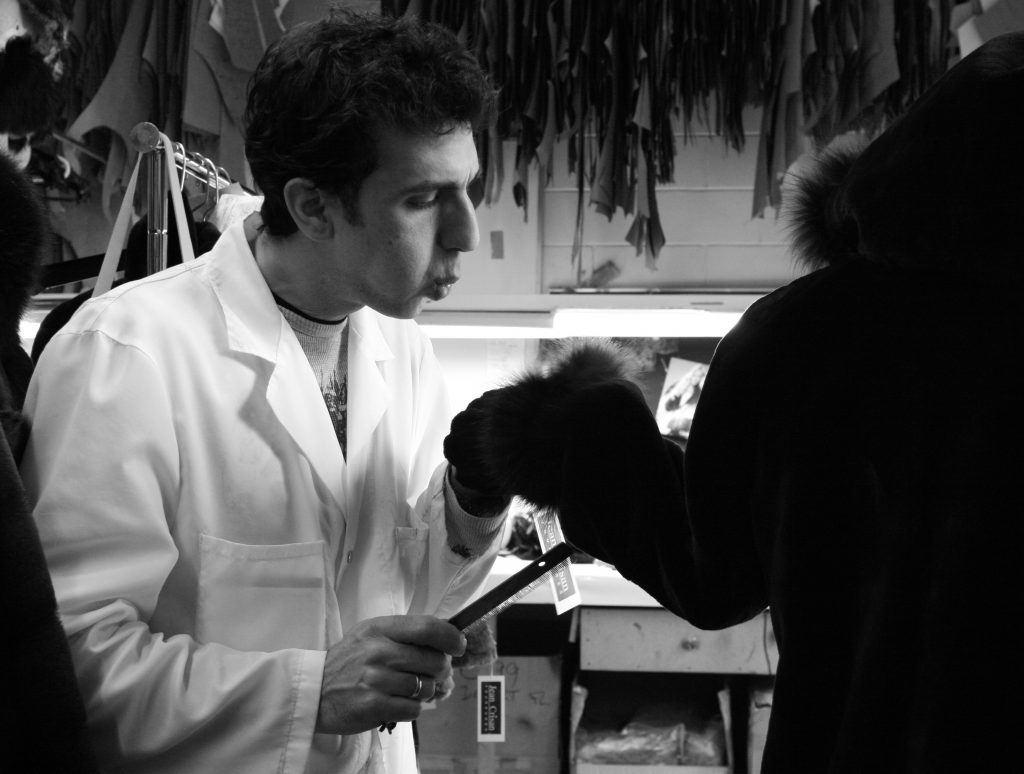
Related Reading:
- Take the cotton out of your ears, please by Mick Madsen, Fur for Thought, 21 August 2013.
- **************************
NOTES:
Here are a few examples where the “CE Delft” study is cited in an attempt to discredit the environmental credentials of the fur trade:
1. “A study by consultancy firm CE Delft in 2011 found that the impact of fur production on 17 out of 18 environmental issues – such as climate change, ozone pollution and soil acidification – was found to be more harmful than when compared to common textiles.” From Cruel or cool? Worldwide sales of fur top £10 billion by Hayley Leaver, Metro.co.uk, 22 May 2013.
2. “PETA points to a 2011 study by a Netherlands consultancy firm CE Delft which compared the impact of fur production with common textiles on 18 different environmental issues such as climate change, ozone pollution, soil acidification and water and land use. ‘For 17 of the 18 issues, fur was found to be much more harmful than common textiles,’ says Ben Williamson, a spokesperson for PETA.” From Is the fur trade sustainable? By Tansy Hoskins, The Guardian, 29 October 2013.
3. “A 2011 study by Dutch independent researchers CE Delft calls fur production worse than textile production, in terms of environmental degradation. Carcinogens like chromium and formaldehyde, employed in dressing and dyeing processes, compromise fur’s biodegradability, not to mention ecological stability.” From Fur is Green. True or Faux? By Jody McCutcheon, Eluxe Magazine, 22 February 2013.
Lies Activists Tell: #2 – “University of Michigan / Ford Motor” report
by Alan Herscovici, Senior Researcher, Truth About FurIn our last post, we exposed how activists lie when they claim that the World Bank condemned fur dressing as…
Read More
In our last post, we exposed how activists lie when they claim that the World Bank condemned fur dressing as “highly polluting”.
Today we turn our “Truth-About-Fur-Detector” to another oft-repeated but equally fraudulent claim.
Activists often insist that “a coat made from wild-caught fur requires 3.5 times more energy than a synthetic coat, while a farmed-fur coat requires 15 times more energy.” (see: NOTES, below)
These “facts” are attributed to “a study by the University of Michigan” or sometimes the “Scientific Research Laboratory at Ford Motor Company”. Wow, pretty credible sources, right? Except that a quick search reveals that neither institution ever published such a study!
This report does indeed exist, although it is very old – it was published in 1979. The author, one Gregory H. Smith, is identified as an engineering graduate of Michigan U., who worked for Ford. But he prepared his report at the request of The Fund for Animals (a Michigan-based animal-rights group), “to augment its arguments for abolishing the cruelties to animals resulting from the procurement of natural animals furs for human adornment.”
The methodology of this report is equally suspect.
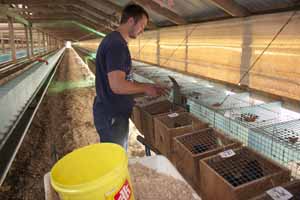
According to Smith, more than 90 per cent of the energy attributed to the production of a farmed mink coat is accounted for by a single item: the feed used to produce the mink pelts. Smith claims that mink feed represents 7.7 million of the 8.5 million British Thermal Units (BTUs) he calculates is required to make a fur coat. But BTUs, scientific as they may sound, don’t tell the whole story. Like the mink themselves, mink feed is organic material. Specifically, mink eat the parts of chickens, cattle, fish and other foodstuffs that we don’t eat. Mink feed, in the language of ecology, is “a renewable resource". The petroleum used to produce poly-acrylic fake fur, by contrast, is a non-renewable resource. Comparing the energy used to produce natural mink and fake fur is comparing apples and oranges. (Or, more accurately: apples and the plastic bag you carry them home in!)
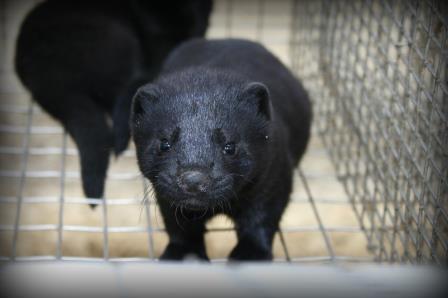
Furthermore, much of this abattoir and fish-packing waste would end up clogging land-fills if mink were not consuming it. Far from being an environmental “cost”, this recycling of wastes from our own food-production system can be seen as an environmental “credit”. (Mink also help to keep down the cost of human food, since food processors would have to pay to dispose of these wastes if mink farmers weren’t using them.)
Smith also misses the point in his analysis of wild-captured furs.
He guesstimates the amount of gasoline trappers might use touring their trap lines, heating their cabins – and even the energy required to make steel for traps that may be lost or require replacement. His numbers are arbitrary and questionable, to say the least. But, more to the point: he ignores the fact that furbearer populations would often have to be managed even if we did not use the fur – e.g., to protect property, control diseases and protect endangered species. Overpopulated beavers can flood roads, farmland, and forest habitat. Coyotes and foxes prey on livestock or the eggs (or chicks) of nesting birds; without predator control, it would be difficult to protect endangered whooping cranes or sea turtles. Raccoons and skunks spread rabies, and on it goes. Without fur sales, wildlife population control work would still have to be done, but trappers would be paid by the taxpayers – as they are in many European countries. (E.g., muskrat control in Belgium and Holland.) Again: the conservation work done by trappers can be seen as an environmental credit, rather than a cost!
Bottom line: the real wasteful BTUs expended here would seem to be in quoting this poorly researched and misleading “study”. We can only hope that Mr. Smith kept his day-job at Ford!
**************************
NOTES:
Here are a few examples where the "University of Michigan / Ford Motor Company" report is cited to claim that fur requires more energy to produce than fakes:
- “One article commonly cited by anti-fur groups is a study by the Ford Motor Company comparing the energy requirements of fur production. The study concluded that a fur coat made from wild trapped animals required 3.5 times the energy input compared to a synthetic fur coat." From Fur is Mean by Eric Simpson, The Queens Journal, 8 November 2013.
- “According to a study at the University of Michigan, the energy needed to produce a fur coat from farmed animals is 15 times greater than that required for a fake one." From Is ‘ethical fur’ the fashion industry’s most cynical con yet? By Danny Penman, The Daily Mail, 17 March 2011.
- "According to a study by the University of Michigan, the energy needed to produce a real fur coat from ranch-raised animal skins is 20 times that required for a fake product." From Fur - the fake debate, The Independent, 23 November 2004.
Lies Activists Tell: #1 – Environmental Impact of Fur
by Alan Herscovici, Senior Researcher, Truth About FurThe Fur Council of Canada’s Fur is Green campaign clearly caught animal activists by surprise. In their scramble for a…
Read More

The Fur Council of Canada’s Fur is Green campaign clearly caught animal activists by surprise. In their scramble for a rebuttal, they have resorted to fabricating “evidence” about fur's environmental impact that sounds credible – at least until you check their sources!
One of the most commonly-repeated activist claims is that “a World Bank Report has shown that fur dressing is the third worst polluting industry, following pesticides and fertilizers, synthetic resins and plastics.” (see: NOTES, below)
If true, this would be a serious charge, so I hunted down the original study. The report in question is The Industrial Pollution Projection System, produced by the World Bank Policy Research Department (Policy research working paper #1431, by Hemamala Hettige et al.) This study was drafted in March 1995, based on 1987 (27-year-old!) US statistics.
Reading through this highly technical econometric study we learn that “Conclusions are those of the authors and should not be attributed to the World Bank”. Interesting. Also that “Sectorial pollution is thought to be quite responsive to effective environmental regulation in many cases…” (p.9, E-4) Encouraging, because environmental protection regulations have certainly improved considerably over the past 26 years. But let’s read on ...
Ah, finally, there it is: a table listing the most polluting sectors. And what do we find? The sector listed in third place for environmental pollution is clearly identified as “Leather tanning and finishing” (ISIC Code # 3231, Table 4.1, p.23) – NOT “fur dressing and dyeing” (ISIC Code #3232). Fur dressing is a completely different process using much more benign chemicals, because fur dressers must protect the fur and hair follicles. (Leather tanners have no such concerns: they want to remove the fur.) In fact, fur dressing is not even listed in the top 75 polluting industry sectors by the World Bank report! (pg. 23)
Digging further into this study, we find a more extensive list of industry sectors, summarizing their “toxic pollution intensity” (pounds of pollutants per million $ of output.) Here we find confirmation of what common sense would dictate: fur dressing produced only 15% of the air pollutants, 9% of the water pollutants, and barely 7% of the land pollutants compared with leather tanning. (Pg 47.)
In conclusion: it is completely false to claim that the World Bank identified fur dressing as a highly polluting industrial sector. This study showed no such thing. The activists who first quoted this report either don’t understand the important difference between fur dressing and leather tanning, or intentionally misrepresented the findings.
In my next posts we will take a closer look at two other “studies” that are repeated referenced by activists to challenge the fur trade’s environmental credentials.
**************************
NOTES:
Here are a few recent examples of activists (falsely) claiming that the World Bank report cited fur dressing as one of the most polluting industrial sectors:
- “Fur dressing has been ranked as one of the world's five worst industries for toxic-metal pollution – not by animal rights protesters, but the World Bank. If fur is green, then the term 'green' is meaningless.” From "Fur is not back in style – Britain won't stand for it", by Tansley Hoskins, The Guardian, 29 October 2013.
- “The Fur Council of Canada argues that their product is green because real fur is a 'natural fiber'. But after an animal is killed and the fur is removed, it must be heavily processed using carcinogenic chemicals to prevent it from biodegrading. In 1995 the World Bank, in their report entitled The Industrial Pollution Projection System, ranked fur processing (and in particular the tanning process) as number three in their list of toxic industrial processes.” From "Fur is Mean", by Eric Simpson, The Queens Journal, 8 November 2013.
- "In fact, the World Bank ranks fur processing as the world’s fifth biggest toxic metal polluter. And ironically, given fur’s allure as a sexy material, tanning relies on chemicals such as toluene and lead. Both reduce human fertility." From "Is 'ethical fur' the fashion industry's most cynical con yet?", by Danny Penman, The Daily Mail, 17 March 2011.
***
To learn more about donating to Truth About Fur, click here.
Why Is Fur So Controversial and Why Should It Matter?
by Alan Herscovici, Senior Researcher, Truth About FurWith fur now so prominent on the designer catwalks, in fashion magazines, and on the street, many publications are hosting…
Read More
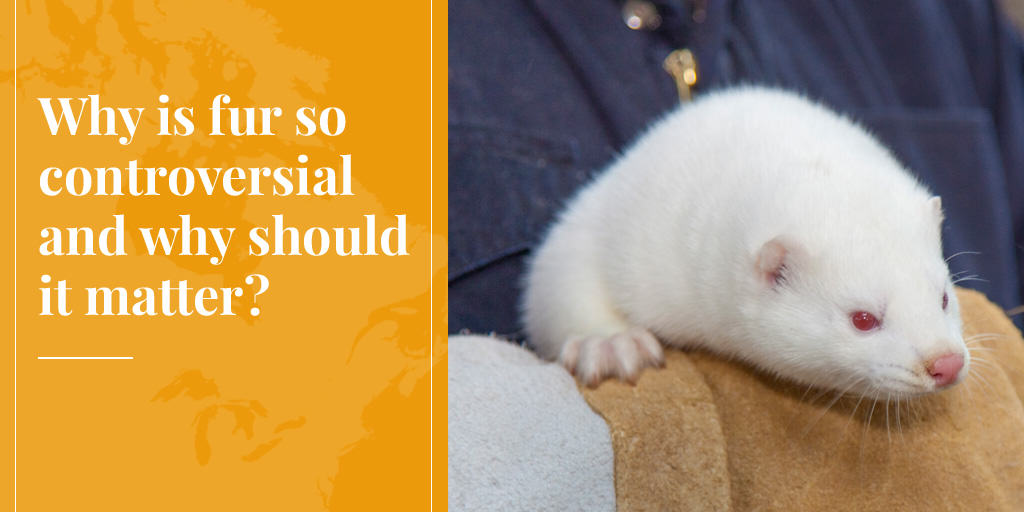
With fur now so prominent on the designer catwalks, in fashion magazines, and on the street, many publications are hosting debates about the ethics of wearing this noble but much-maligned material. Among all the arguments, for and against, one question is never asked: “Why is fur so controversial?”
True, animals are killed for fur. But more animals are killed for food every day in North America than are used for fur in a year!
But we don’t need fur, you say? Well, PETA and their friends argue that we don’t need to eat meat either.
The real reasons why fur is “controversial” may surprise you.
Let’s take a look ...
10 Top Reasons Why Fur Is “Controversial”
#1. The Fur Debate Is “Class War”: According to “animal-rights” philosophers, eating meat is no more justified than wearing fur. Even Peter Singer - whose book Animal Liberation launched the modern animal-rights movement – wrote that it is hypocritical to protest against the fur trade while most people eat animals daily. In practice, however, fur is an easy target because relatively few people wear it – and most of them are women. And fur apparel is expensive (because much of the work is done by hand) making it easy to dismiss as an “unnecessary luxury”.
Fur is a convenient cross-over issue for those who decry “capitalist exploitation" of both humans and animals. Thus, the “A” in “ALF” (Animal Liberation Front) is often circled – the graffiti code for “Anarchy” – and it is usually left-wing parties in Europe that endorse anti-fur positions.
The fact that those hurt by anti-fur campaigning are working people – aboriginal and other trappers, farm families, craftspeople – is something these “idealists” prefer to ignore. This is why PETA is so upset by the growing popularity of fur for small accessories or trim on parkas: this trend is making fur much more widely accessible, especially for young people.

#2. Fur as Scapegoat: We are bombarded with warnings that human activities are changing our climate, polluting the environment, destroying rainforests and driving record numbers of species into extinction.
These problems are complicated and solving them will require major changes in our lifestyles. So it may seem reasonable to claim that “if we care about nature, at least we should stop killing animals for frivolous products like fur!”
In fact, the trapping of wild furbearers is strictly regulated by state and provincial wildlife agencies to ensure that we use only a small part of the surplus nature produces each year. Endangered species are never used.
The modern fur trade is an excellent example of “the sustainable and responsible use of renewable natural resources”, a key ecological concept supported by all serious conservation authorities (International Union for Conservation of Nature, WWF, UNEP). Using renewable resources, like fur, is ecologically preferable to using synthetics derived from (non-renewable) petro-chemicals. And giving commercial value to wildlife provides a financial incentive to protect natural habitat, which is vital for the survival of wild species.
But why let facts get in the way of a good story?!
#3. “Media Sluts!” Speaking of stories, PETA co-founder and president Ingrid Newkirk explains its success in using the media to promote its issues (and brand!) as follows: “We’re media sluts ... we didn’t create the rules, we just learned how to play the game!”
PETA understands that media can’t resist running a photo feature about a starlet, supermodel or other "celebrity" – especially if they are female and undressed. So what if these women know nothing about conservation or wildlife biology, “the medium is the message”. Of course, getting on the evening news does not pay the bills. That’s where modern fund-raising technology comes in. (See #4)
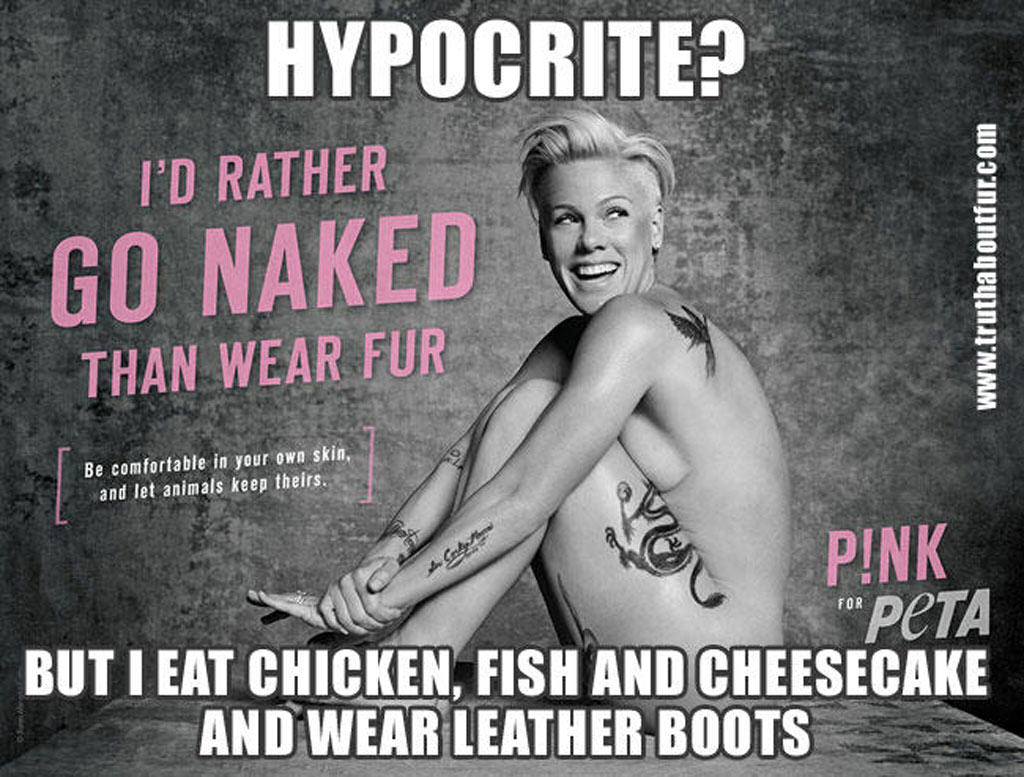
#4. Follow the Money! Many people don’t realize that campaigning against fur and other animal-based industries has become a very lucrative business. PETA and its affiliates rake in some $30 million annually; the so-called Humane Society of the United States (HSUS) collects more than $100 million. HSUS execs pull down six-figure salaries. And there are dozens of other groups.
Very little of this money goes to animal shelters; most is churned back into driving more “issues” and fund-raising campaigns.
PETA alone has more than 100 employees writing letters to editors and planning photo ops. The media stunts are quickly followed up with direct-mail, fund-raising appeals: “Please help us to stop this atrocious suffering!”
Computer technology allows this thriving new protest industry to target zip codes most likely to contribute. The money collected far exceeds what the fur trade – an artisanal industry comprised of thousands of small-scale, independent producers – can devote to telling their side of the story. So the activist message is most often heard – creating the impression that “there must be something wrong with the fur trade!”
As a leading animal activist once told me: “You can’t win because you have to spend money to fight us, but we make our money attacking you!”
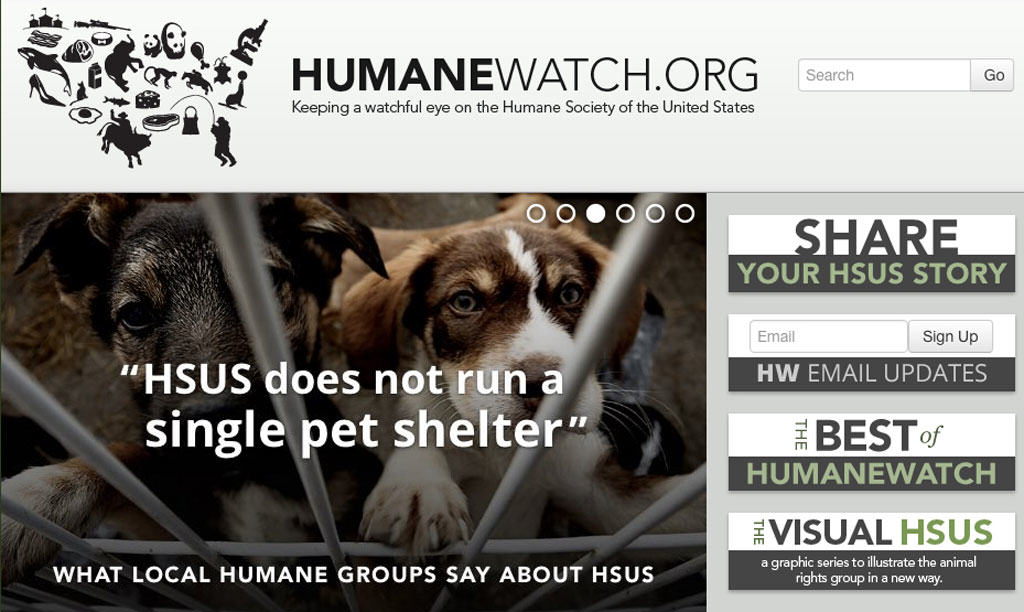
#5. Fur as Political Football: Lobbying to ban the production or sale of fur is emerging as a favorite activist tactic – especially because they don’t even have to win for it to work!
Political campaigns transform the parochial views of special interest groups into “hard news”. Well-informed journalists may resist providing free publicity for PETA’s street theater, but they cannot easily ignore a political campaign. And legislative bans carry a deeper message: if governments are prepared to shut down a tax-paying business, surely this must be a very evil industry indeed!
In fact, the real message of politics is ... politics.
Political attacks on the fur trade generally succeed only at the municipal level (an incestuous world where very few councillors make the decisions), or in countries with proportional representation. In these countries (including most of Europe), there are so many parties that complex coalitions are needed to cobble together a majority. Mink farmers (or seal hunters) wield limited economic clout – and fewer votes – making them ideal sacrificial lambs to bring left-wing or “green” partners into government coalitions.
Meanwhile, European governments now pay trappers to kill muskrats, (to protect dykes and farmland in Belgium and the Netherlands), or badgers (in Britain, to control bovine tuberculosis) – and destroy the furs. And while the EU banned the import of sealskins, fishermen there can shoot seals to protect their nets, without regulations or oversight, so long as they don’t sell the pelts!
Another revealing example is Israel, where a few members of the Knesset are hoping to ban all fur sales. Because there is almost no fur trade in Israel, it is very tempting for the government to yield to such pressures; there is no domestic downside. A fur ban in Israel would change almost nothing in that country, but activists hope to use it as a precedent for similar initiatives in Europe and North America – a rare example of “progressive” groups citing Israel as an ethical leader!
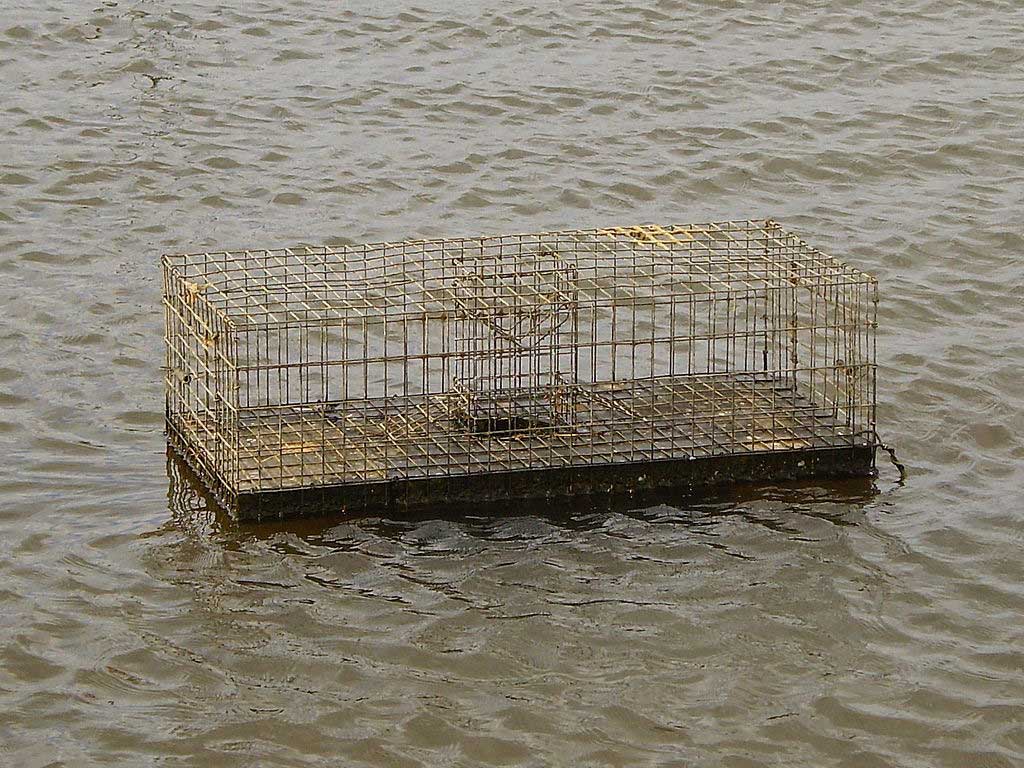
#6. Nature as Disneyland: Not so long ago, most North Americans still had family on the land. Summers might include visits with grandparents or other relatives on the farm – people who understood that nature is not Disneyland and animals are not talking cartoon characters.
Today, for the first time in human history, most of us live in cities. We have little direct contact with (living) animals that are not pets. We do not know that taking some animals each year may be the best way to keep the rest of the population stable and healthy. Or that wildlife must be controlled to protect property and habitat (e.g., from beaver flooding), to protect nesting birds and their eggs from predators (coyotes, foxes), to prevent the spread of dangerous diseases (e.g., rabies in raccoons, skunks), and for many other reasons.
When our meat comes in Styrofoam trays in the supermarket, we are easily shocked by images of animal slaughter for any purpose. Animal activists complain that industrial/urbanized society has lost respect for nature and animals – but, ironically, their campaigns attack the livelihoods and cultures of the few people who still live close to the land.
#7. Harassment of Women: We are rightfully disgusted when women are attacked in some countries for wearing their skirts too short or not covering their heads. Animal activists, however, have little to learn from religious extremists when it comes to harassing women.
Some notable anti-fur slogans have included: “It Takes 40 Dumb Animals to Make a Fur Coat, But Only One to Wear It!” and “Shame!”, an HSUS campaign showing a woman in fur hiding her face with her handbag. The goal is clearly to intimidate women, to make them feel uncomfortable wearing fur.
One wonders, would anti-fur campaigning have become so aggressive if men wore most of the fur coats? Perhaps PETA would show more moral conviction if they demonstrated against the use of leather by motorcycle gangs!

#8. Politically-Correct Bullies: “If you don’t remove fur from your store, we will picket every day before Christmas with a large-screen TV showing animals being skinned alive!”
When fur represents only a small proportion of their sales, fashion retailers cannot easily resist this sort of threat, even if fur is perfectly legal and their customers want to buy it. Those who persist may find their locks glued or windows broken. Or their homes may be splattered with red paint, their neighborhoods plastered with posters denouncing them as “murderers”. Security costs soon outweigh potential profits – or principles about freedom of choice.
When the mafia targets businesses in this way, it’s called a protection racket. When foreigners use threats of violence to make us do what they want, it’s called terrorism. But retailers targeted by animal activists are on their own; their tormenters are called “idealists”. And if the retailer decides to buy peace, their decision to drop fur is trumpeted by the bullies as a “moral victory” – and more proof that fur is “controversial”.
#9. Seeing Is Believing! Nothing has done more to fuel the fur “controversy” than a number of shocking videos posted on the web. These videos show animals in very bad condition on fur farms and even, in one particularly horrific example, an Asiatic raccoon being skinned while clearly still conscious, in a dusty village square somewhere in China.
Pictures are worth a thousand words and videos don’t lie ... or do they?
The injured animals shown in one “US fox farm” video were actually being kept for urine, to produce hunting lures. The farm never sold fur – fur from such poorly cared-for animals would have little or no value – and was later forced to clean up its act by the Illinois Department of Natural Resources. (The video mentions none of this.)
The Asiatic raccoon-skinning video is particularly upsetting, and especially dubious. No one would skin an animal alive. Morality aside, a conscious animal moves, increasing the risk of damaging the fur or cutting the operator. And with the heart still beating, an animal bleeds more, unnecessarily soiling the fur.
The only logical conclusion, shocking as this may be, is that someone paid a poor villager to do this terrible act for the camera.
When this video was first released by a Swiss animal rights group, in 2005, the International Fur Federation requested the full, uncut tape, with information about when and where it was filmed, so an investigation could be launched. There was no response – a strange reaction from a group supposedly concerned about animal welfare. Unless, of course, the real goal was to fuel controversy!
SEE ALSO: 5 REASONS WHY IT'S RIDICULOUS TO CLAIM ANIMALS ARE SKINNED ALIVE
#10. A Culture in Search of Values: Above all, the controversy sparked by fur reflects a confusion of values in our fast-changing society.
Wherever they were from, our grandparents lived in cultures with very clear ideas about what we should eat or wear, how we should speak or act. Urbanization, globalization, secularism and multi-culturalism have changed all that. It is no longer always clear what is right or wrong.
Without a social consensus, we live in constant doubt; sects flourish, politics become increasingly polarized, conspiracy theories abound. A simple trip to the grocery store becomes an existential experience: Should we eat meat? Is it better to buy organic or locally-produced food? What about low salt, high carbs, GMOs?
In this cloud of nutritional, ecological and ethical confusion, fur can become a flashpoint for the clash of urban and rural cultures, for troubling questions about our relationship with nature and animals, and, not least important, for the tension between collective values and individual freedom of choice.

Final Word – Fur Leaves No One Indifferent!
Fur means different things in different cultures. Aboriginal people believed they could partake of animal power by wearing fur and that using these “gifts” showed respect for the animals that gave themselves so that humans might survive. (Much like many of us still say grace before meals.) Furs have also often conveyed status and power: furs adorn ceremonial robes and, in the Middle Ages, strict laws determined which furs might be worn by different classes. Ultra-Orthodox Jews wear fur-trimmed hats (streimels) on the Sabbath, to spiritually elevate both man and animal.
In the golden years of Hollywood, furs represented luxury and sensuality – as they still do for many. Today, animal activists would like to associate the wearing of fur with human arrogance and guilt, even as a new generation of designers rediscovers its natural beauty and makes fur more versatile and accessible than ever before. While some now denounce the fur trade as a crime against nature, others argue quite the contrary, i.e., that wearing and admiring fur can remind modern city dwellers that we are, ultimately, dependent on nature for our survival.
And this, perhaps, is the true nut of the fur debate: are humans “a rogue species”, “a cancer on the planet” that would be better eliminated, as some “deep ecologists” and the “voluntary human extinction movement” would have us believe? Or are we truly part of nature, a natural predator with as much right to be here as any other species (although with greater responsibilities, because of our unprecedented power and knowledge)?
Fur, in summary, has always been more than a beautiful, natural material. Fur has always had symbolic meaning, a powerful hold on the human imagination. The current “controversy” about fur is just the latest example of the on-going attraction of the most precious of natural clothing materials.







